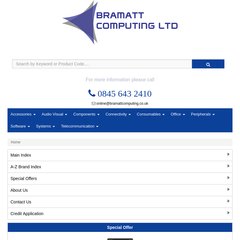
- #Indigo server cs how to
- #Indigo server cs install
- #Indigo server cs driver
- #Indigo server cs full
- #Indigo server cs code
#Indigo server cs how to
Examples how to use INDIGO drivers without a server can be found in indigo_examples/executable_driver_client.c and indigo_examples/dynamic_driver_client.c In this case only locally attached devices can be accessed (much like ASCOM). Clients can load drivers and use them without the need of a server. INDIGO does not require server to operate. The INDIGO drivers can be used by both indigo_server and clients. Indigo_server───indigo_worker─┬─indigo_ccd_simulator Dynamic drivers provide huge performance benefit over executable drivers. It will be run in indigo_worker process and can be unloaded and loaded any time.
#Indigo server cs driver
Loading a driver without -i switch will load the dynamically loadable version of the driver. This is the recommended way to load drivers at startup. This switch will load the executable version of the driver. The drawback of this approach is that the driver communication will be in orders of magnitude slower than running the driver in the indigo_worker process and those driver can not be dynamically loaded and unloaded. This is the way to run INDI drivers in INDIGO. If a driver name is preceded by this switch it will be run in a separate process. Proxied BLOBs are a bit slower to download compared to the direct download from their server of origin. This feature is useful in case the remote server is in a network not accessible by the clients of this server. Otherwise BLOB URLs will point to their servers of origin. This way all the BLOBs of the remote servers will be accessible through an URL pointing to this server. In case -r or -remote-server is used and BLOB URLs are enabled, this server will act as a BLOB proxy. This switch can be used multiple times, once per server. This switch is used for providing host names and ports of the remote servers to be attached. INDIGO servers can connect to other INDIGO servers and attach their buses to their own bus.
#Indigo server cs full
Shows a lot of messages, like low level driver-device communication and full INDIGO protocol chatter. Useful for debugging and troubleshooting.

Shows some information messages in the log. This switch will disable the web based control panel. This switch will disable INDIGO web applications like Imager, Telescope control etc.

With this switch you can force the server to accept only legacy INDI style blob transfer. By default the client can request any type of BLOB transfer. The second INDIGO style is to use binary image transfer over HTTP protocol avoiding encoding, decoding and data size overhead. 30% larger and the encoding and decoding is CPU intensive. One is the legacy INDI style where the image is base64 encoded and sent to the client in plain text and the client decodes the data on its end. INDIGO provides 2 ways of BLOB (image) transfer. The client should enter host and port to connect. b- | -disable-bonjourĭo not announce the service with Bonjour. Please see INDIGO_DEVICE_ACCESS_CONTROL_AND_LOCKING.md for details. Use tokens for device access control from a file. Set the server master token for device access control. This will set the name of the service in the network, so that the clients can discover and automatically connect to the INDIGO server without providing host and port.

INDIGO uses mDNS/Bonjour for service discovery. Set listening port for the indigo_server. Indigo_server───indigo_worker─┬─ĭebug and error messages are sent to syslog. This is is used for faulty driver debugging. This switch prevents this behavior and if a driver fails the whole server will crash without an attempt to recover. This is done for a reason, if a single driver crashes this will crash indigo_worker process indigo server will detect it and start indigo_worker again. The indigo_server is highly configurable trough command line options at start and also when already started: - | -do-not-forkīy default indigo_server will start a child process called indigo_worker, and the drivers will be run in the boundaries of this process. r | -remote-server host (default port: 7624) T | -master-token token (master token for devce access default: 0 = none) Indigo_server indigo_driver_name indigo_driver_name.
#Indigo server cs code
Edge extracts the C# code from the function body using regular expressions: var add7 = edge.INDIGO server v.2.0-141 built on 01:06:15. In another representation, you can embed multi-line C# source code by providing a function with a body containing a multi-line comment. Var helloWorld = edge.func(function () ') You can script C# from a Node.js process:
#Indigo server cs install


 0 kommentar(er)
0 kommentar(er)
